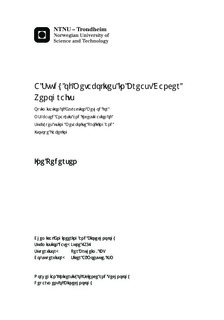| dc.description.abstract | The most common cancer among women in Europe and the United States is breast cancer. However, treatment remains a major challenge. If prediction of prognosis and treatment response become more reliable, treatment can be improved. An approach to overcome this challenge is to establish a technique for identification of subtypes. Metabolite profiling of breast cancer has shown potential to identify subtype. The aim was divided into three parts, including metabolite extraction and profiling and isotope labelling of metabolites.The first aim was to optimise a method for extraction of polar and non-polar metabolites for mass spectrometry-based analysis. To achieve the aim, beads-based homogenisation of xenograft tissue in 60% methanol solution and in chloroform was performed in a series of experiments. Requirements were fulfilled, including complete extraction, simple performance and high reproducibility. Method was therefore stated successfully optimised.The second aim was to obtain and compare metabolite profiles of luminal-like and basal-like subtypes of breast cancers. To achieve the aim, polar metabolites were extracted from xenograft tissue using the optimised method prior to gas chromatography mass spectrometry (GC-MS) analysis. Profiles comprising more than 30 metabolites and their concentration were obtained. For comparison of subtypes, data analysis including log2 ratios, principal component analysis (PCA) and Student's t-test were used. All data analyses indicated differences in metabolite concentrations between subtypes. 15 metabolites were found by Student's t-test to significantly differ in concentration between subtypes, including lactate, glycine, citrate, lysine and aspartate. Therefore, metabolite profiling is a potential tool for identification of subtype. Furthermore, metabolites shown to significantly differ may provide insight into metabolic changes in breast cancers that remain poorly understood. The third aim was to investigate metabolic pathways in luminal-like subtype, possessing reduced tumour growth rates due to treatment. To achieve the aim, 13C-labelled glucose was injected into xenograft models prior to tumour excision, extraction, GC-MS analysis and calculation of summed fractional labelling (SFL). 8.3% lactate, 2.2% citrate and 1.6% fumarate were found labelled using SFL. 13C labelling was therefore shown retained throughout glycolysis, to enter the tricarboxylic acid cycle (TCA) cycle and to give rise to TCA intermediates. | nb_NO |

